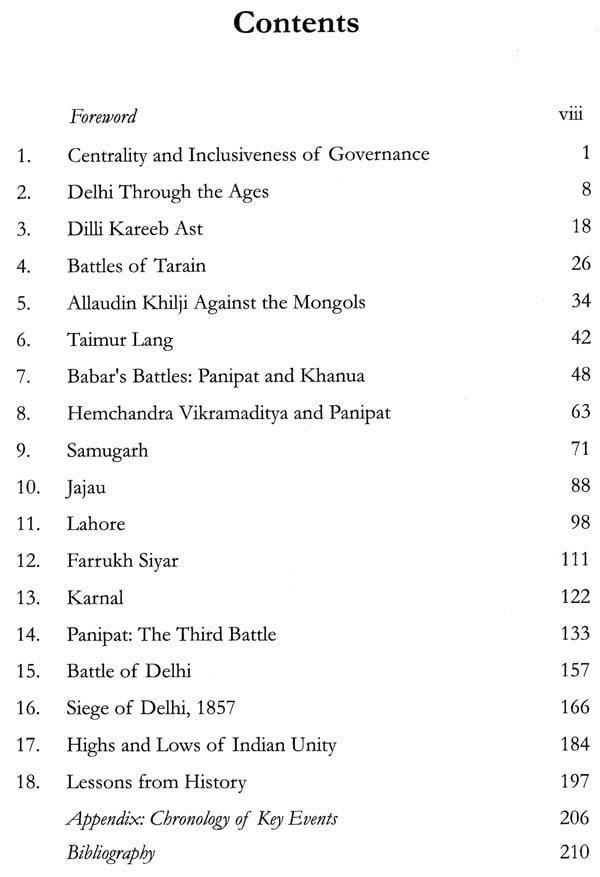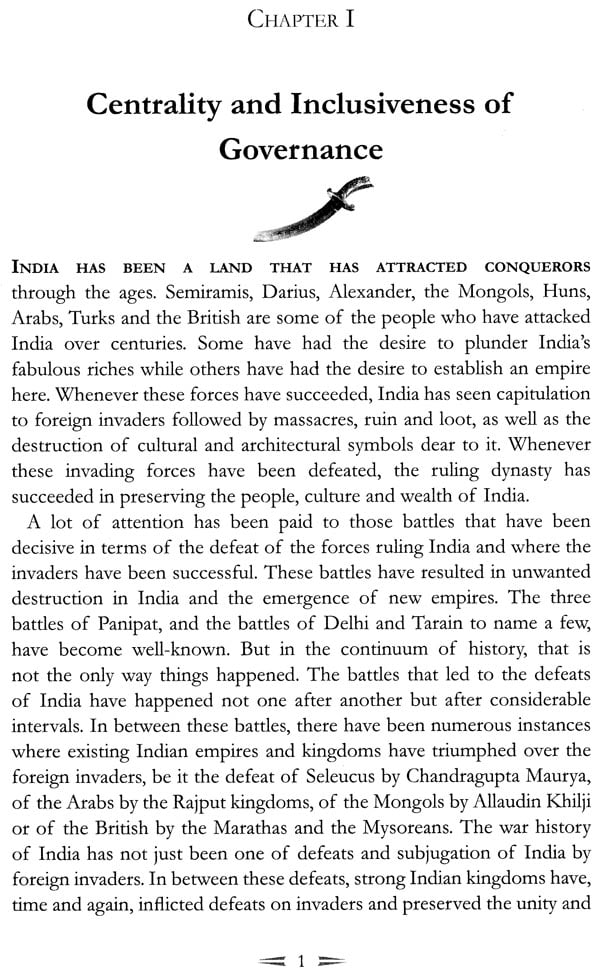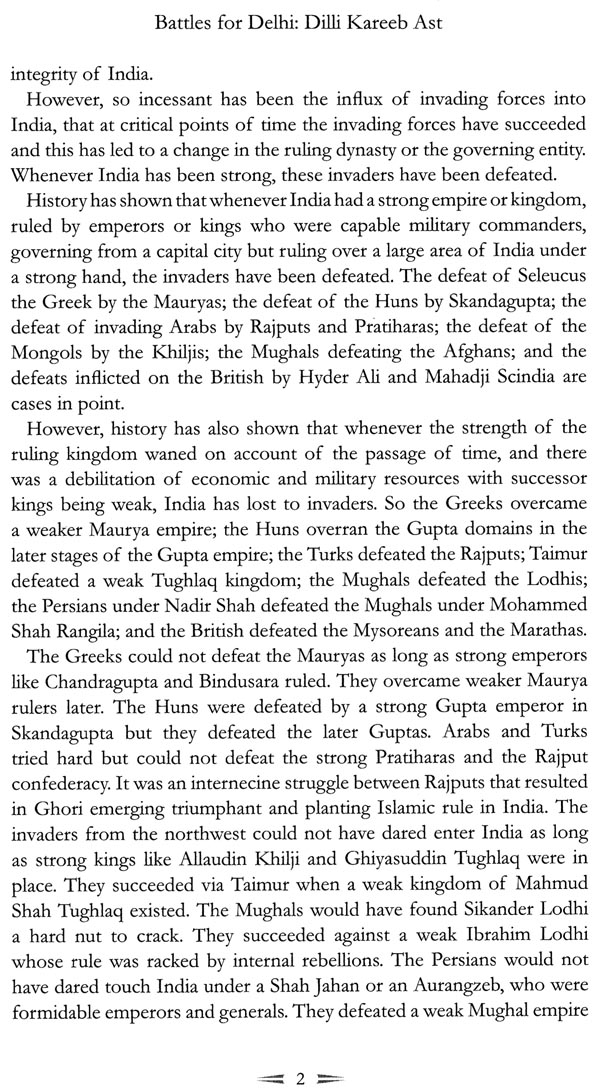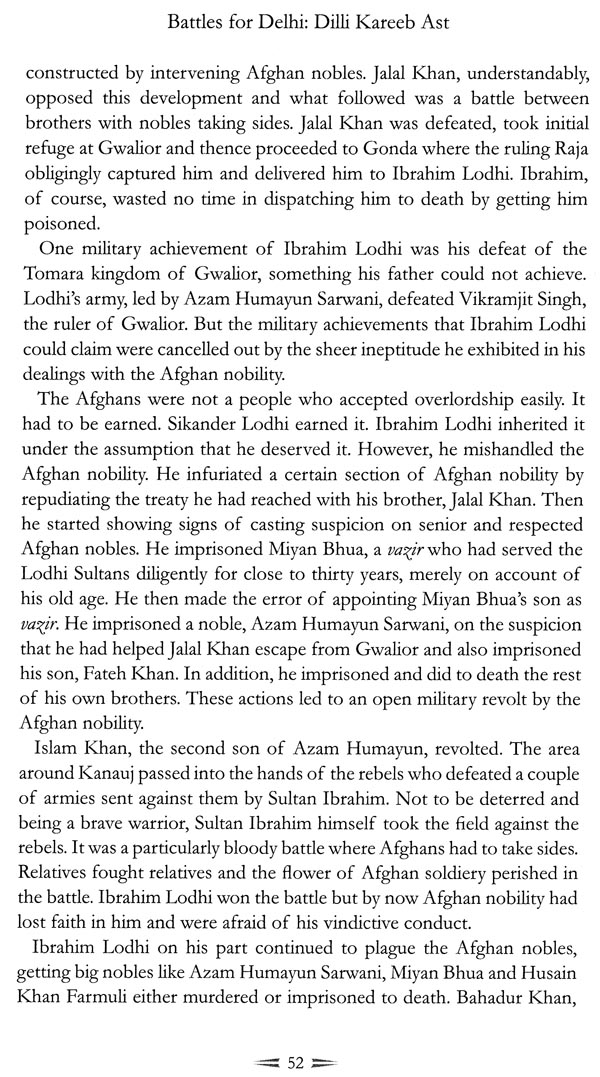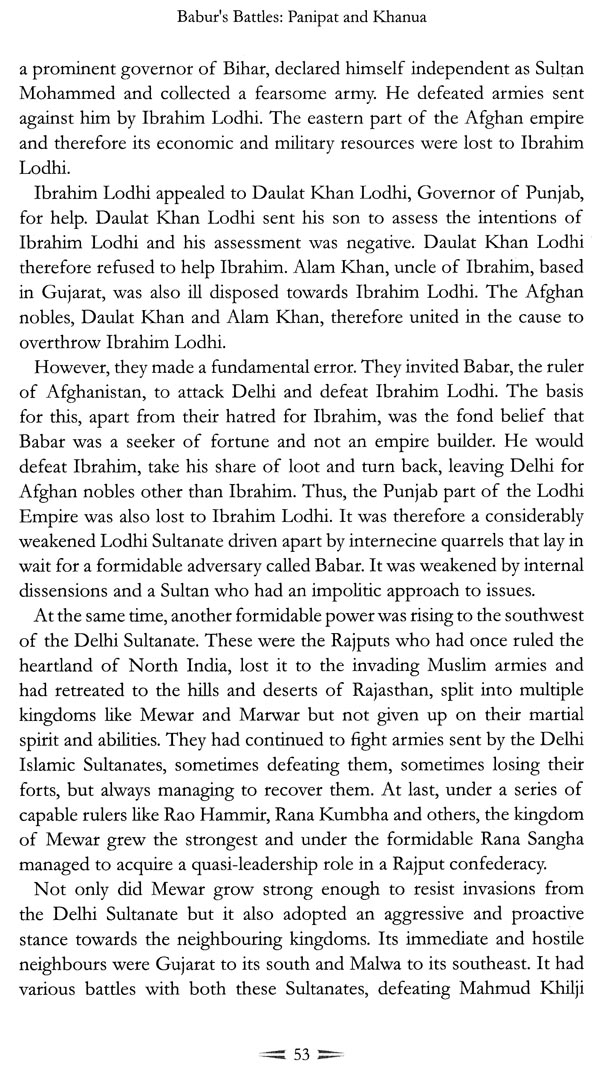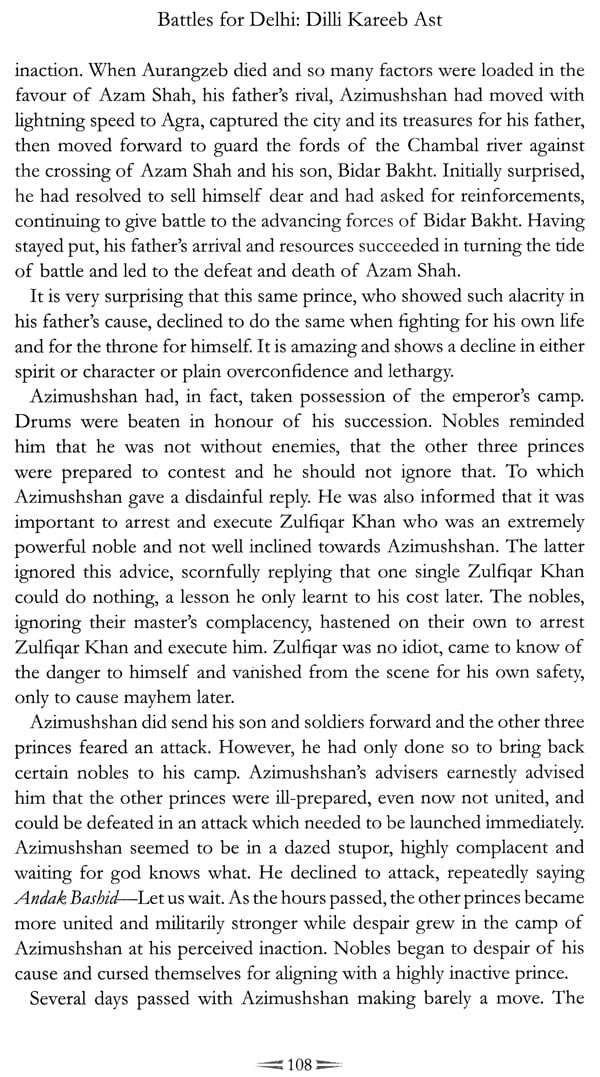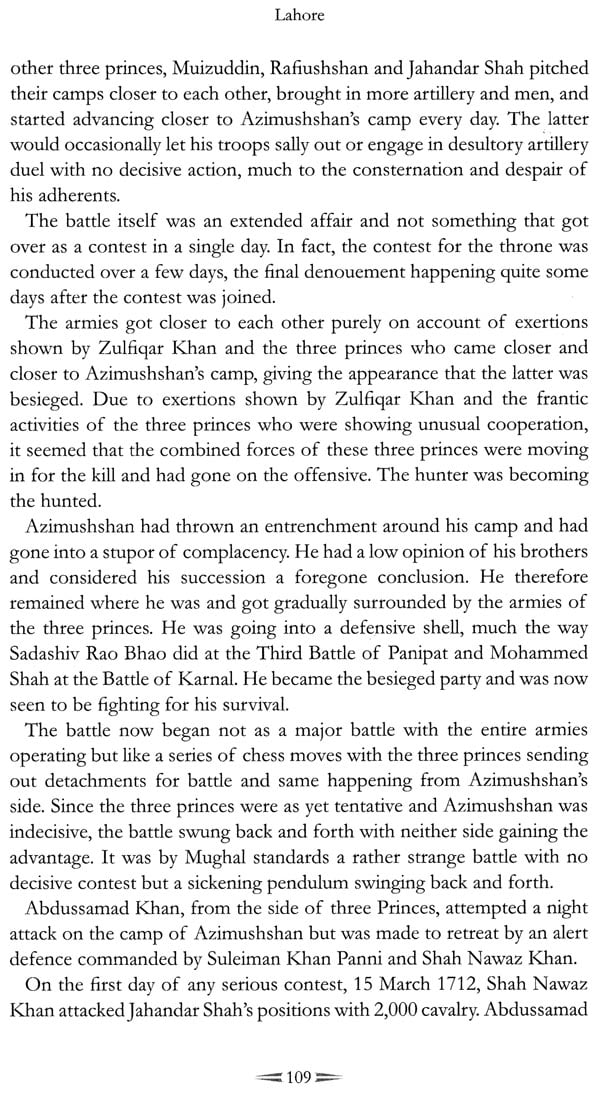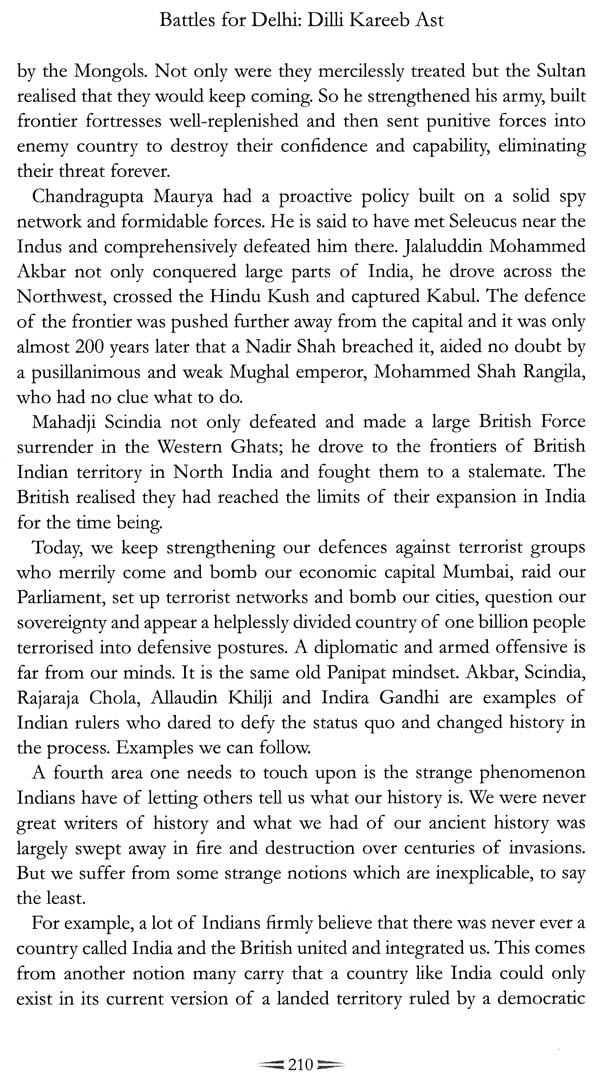
Battles for Delhi- Dilli Kareeb Ast
Book Specification
| Item Code: | NAT856 |
| Author: | Rajeev Katyal |
| Publisher: | Indus Source Books |
| Language: | ENGLISH |
| Edition: | 2016 |
| ISBN: | 9788188569878 |
| Pages: | 220 |
| Cover: | HARDCOVER |
| Other Details | 9.50 X 6.50 inch |
| Weight | 460 gm |
Book Description
Battles for Delhi: Dilli Kareeb Ast traces the highs and lows of Indian unity. It looks at those phases of Indian history from the thirteenth to the nineteenth centuries when Delhi was the capital city of Indian empires. It describes a series of important Battles that were fought to preserve the unity of India either successfully or unsuccessfully and these are mentioned as the Battles for Delhi. When India was a strong nation, its boundaries encompassed almost the whole of South Asia, and it was economically and militarily one of the strongest nations in the world. This book also looks at the phases when India was not a united country although the whole of its land mass was recognised and referred to as India. In such times, India was split into various units and it was not under a unifying rule.
The book opines that India was a strong and united country, as in the Mauryan, Gupta and Mughal ages, when a strong, centrally controlled kingdom existed. This kingdom was centred around a capital city that symbolised the power and strength of India. These strong kingdoms had capable rulers, an established administrative infrastructure, economic prosperity, and formidable military power. In ancient times the capital cities of these kingdoms were Patliputra and Kanauj, and since the thirteenth century AD it has been Delhi.
The book describes the conditions preceding these Battles for Delhi, the battles themselves, and their consequences. Encompassing over six hundred years of Indian history, this book describes thirteen battles from the Battle of Tarain in the late thirteenth century to the Indian War of Independence in 1857, making a strong case for a continuous effort to preserve and strengthen India's unity.
Rajeev Katyal is an alumnus of JIM Kolkata, Delhi College of Engineering and St. Columba's High School. A veteran of the Human Resource Development industry, he has over thirty-one years' experience in the field of Education and Skill Development
He has written, lectured and advised on various education and training forums. He is a member of the School Education Committees of both the Confederation of Indian Industry as well as the Federation of Indian Chamber of Commerce and Industry. Today he leads a chain of schools in India and Japan called the Global Indian International Schools, virtually setting up and running schools from scratch to full functionality.
Having travelled all over the world and in India, he finds no place in the world more fascinating than his own country. A man fond of intense reading and internet surfing, he finds Indian history fascinating. He is of the opinion that Indian history should be written in such a way that it develops greater national pride in young Indians and changes their perspective of India.
INDIA HAS POSSESSED A POWERFUL CULTURE AND A GREAT civilisation over the last five thousand years that has dominated South and East Asia, as well as influenced Central and West Asia, and Europe. Yet India's affluence has also made it vulnerable to attacks by outside forces seeking to benefit from the fabled wealth of the country.
The history of Delhi is to a great extent the history of India, particularly in recent centuries. Delhi has been the throne of the country that each faction has hoped to occupy and rule by its sanction. This struggle for Delhi has not just been with outside invaders but also with the different groups within India itself, striving for supremacy—sometimes making alliances with invaders for their own benefit but to the detriment of the country as a whole.
Delhi became a great city at the end of the Vedic era when it was the Indraprastha of the Mahabharata. People had moved from the Sarasvati River that was drying up to the more reliable waters of the Yamuna. This shift of the rivers occurred around four thousand years ago according to the Geological Survey of India. Delhi remained important historically throughout the following centuries and became the dominant city, if not capital, of India over the last thousand years.
This means that studying and understanding Delhi's history provides many secrets and much insight into the history of India. Delhi's tragedies have often been the tragedies of the country as a whole and of the entire region.
The current book, Battles for Delhi, offers much important insight and information. This covers first of all the outer facts of Delhi's history and the many intrigues around it that have followed one after the other through various dynasties across the centuries. But the book also extends to the national and spiritual implications of these crucial events in Delhi, which have deeply affected the culture of India on various levels. The book is worthy of extensive examination by all those deeply concerned not only about the past but also about the future of India.
Though having a broad cultural unity extending to Southeast Asia, India has seldom sustained a political unity as a country overall. It has witnessed the rise and fall of several large empires, but few of these have ruled the region as a whole. For such a large subcontinent, however, political unity is naturally very difficult to achieve.
China has been the only country of India's size that has been able to maintain a strong unitary rule throughout its history. This rested upon an enduring military tradition that often ruthlessly crushed any opposition to the emperors, and on a strong sense of national unity in the common people, which India was rarely able to create.
We should note that Europe has failed at political unity even more so than India—though it had a common culture, and its nation states themselves had vast empires on several continents during the colonial era. Even today, the future of the European Union, which is primarily an economic union, remains in doubt. Like Europe, India has often been fragmented by strong regional interests and a greater political loyalty to a particularly section of the country or local culture in the subcontinent that did not extend to the country as a whole.
This lack of political unity made India vulnerable to outside forces, even though it had extensive human and economic resources that were often much greater than those of the conquering invaders. India fell according to a divide and conquer strategy from the outside, that was able to benefit by the deep-seated divisions within the country.
This battle for India, as the author notes, is not over, but is simply in a new phase. Yet today the battle for Delhi is a media battle more than it is a physical battle, a scripted clash of political and economic policies and ideologies, East and West, ancient and modern.
**Contents and Sample Pages**
